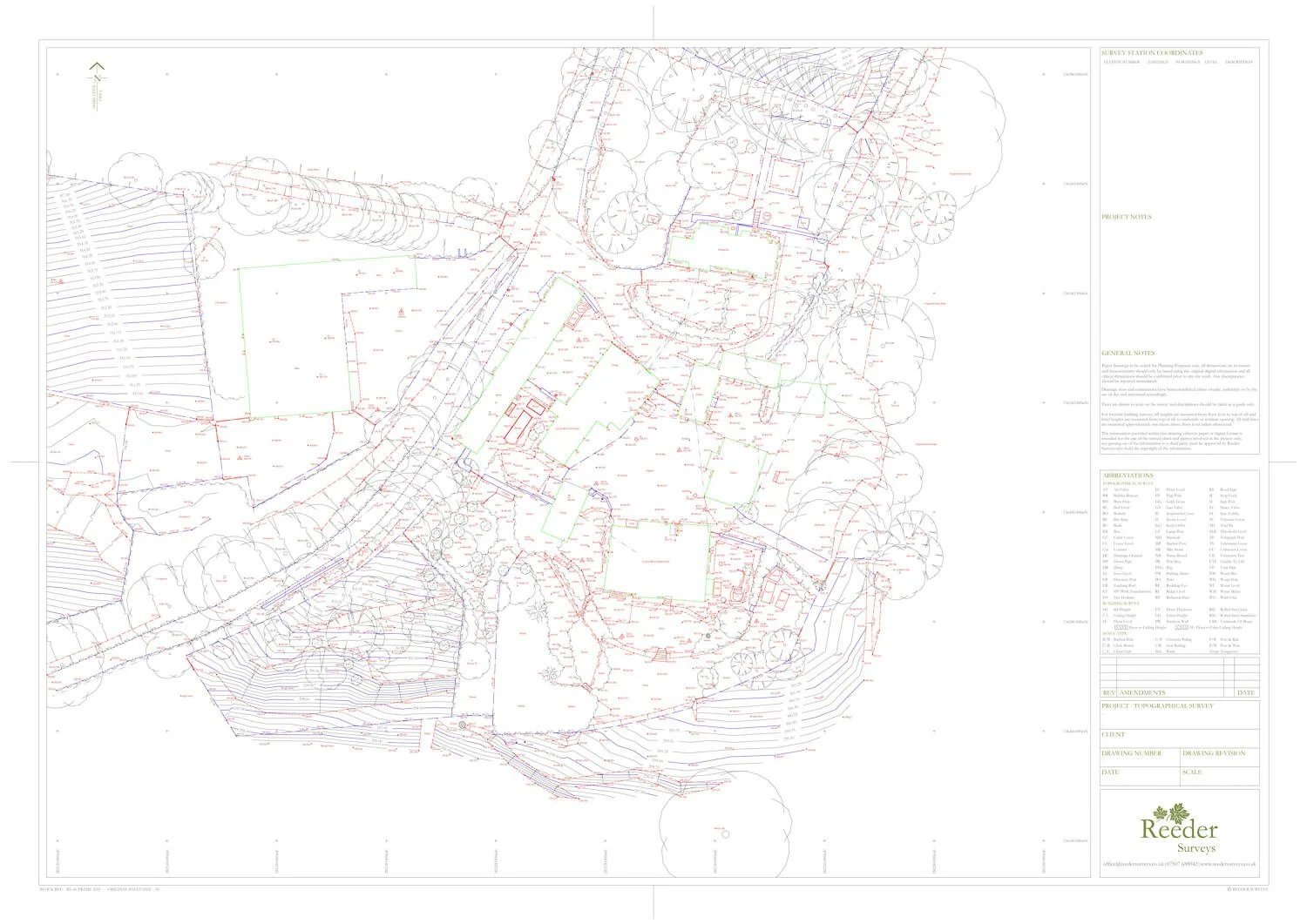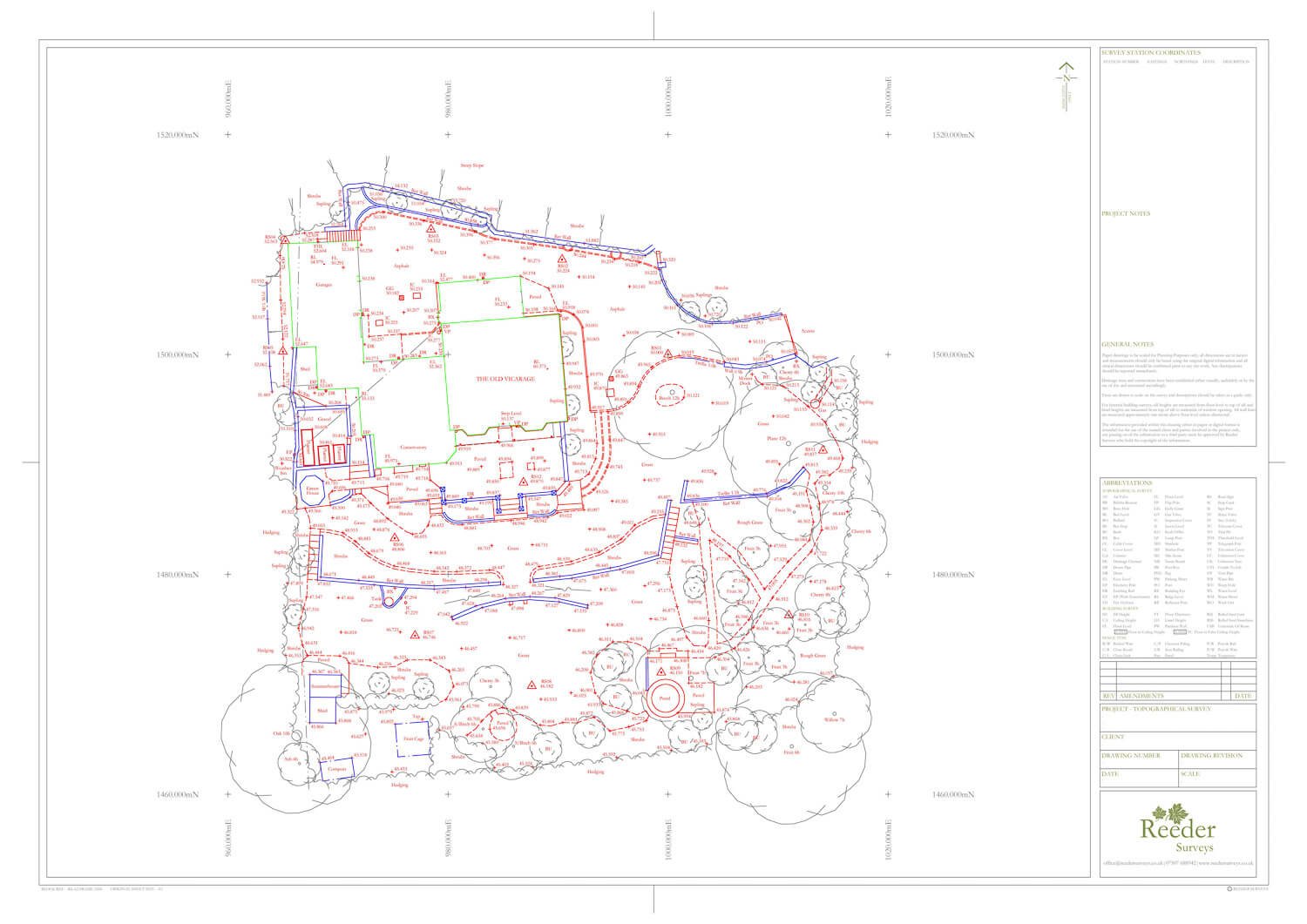
TOPOGRAPHICAL SURVEYS
A topographical survey (also known as a land survey) is a detailed and precise mapping of both the natural and man-made features present on a specific piece of land. It records the shape, contours, and elevation of the ground surface, along with the exact locations of trees, buildings, roads, fences, and various other structures. This type of survey provides an accurate and comprehensive representation of the site’s overall layout and terrain, which is absolutely essential for effective planning of construction projects, landscaping designs, or any form of land development work. By clearly illustrating how the land slopes and identifying where high and low points are situated, a topographical survey enables architects, engineers, and builders to make well-informed decisions. This ensures that their designs will fit the site correctly while helping to prevent potential issues such as flooding, soil erosion, or uneven ground conditions that could impact the success of the project.
DO YOU REQUIRE A TOPOGRAPHICAL SURVEY?
Let us guide you through the process
-

Example Topographical Survey with Contours
-

Example Topographical Survey without Contours
FAQ’S
-
Topographical surveys are primarily used by architects and engineers to accurately design and carefully plan any new developments on a site. This can include projects such as an extension to an existing property or entirely new developments. The detailed information provided by these surveys is essential, as it becomes a crucial part of any planning applications submitted to local authorities.
-
There are several factors that can influence the overall cost of a topographical survey, but it mainly depends on the size and complexity of the area that needs to be surveyed. Once we have been provided with a detailed, marked-up plan of the required area, along with a clear project brief, we will be able to carefully assess the scope of work and subsequently issue a quotation for your consideration.
-
Again, this timeline largely depends on the size and complexity of the project brief and can range anywhere from just a few hours to several weeks. We can advise you of the time required at the point of quotation. However, collecting the site data is only one part of the overall process; once gathered, this information must then be carefully checked and prepared in order to produce the final drawings. We aim to issue these within 10 workings days of site work having been completed.
-
Ordinarily, final drawings are issued digitally in both AutoCAD and PDF formats, carefully prepared at a scale that best suits your specific purposes and project requirements.
-
You can submit a topographical survey to the Land Registry, but whether this is appropriate largely depends on the specific purpose of the submission. In most cases, the survey plan must adhere to particular Land Registry standards, which include using Ordnance Survey digital data as a foundational base. At Reeder Surveys, we can prepare this for you, ensuring the final plan is fully compliant with all Land Registry requirements.
DISCUSS YOUR PROJECT
If you would like to discuss your project requirements but are unsure about where to start, please do not hesitate to reach out to us. We are here to help you navigate every step of the process with ease and confidence.
